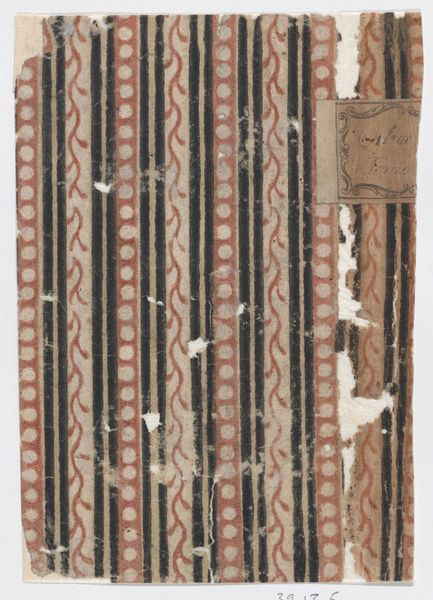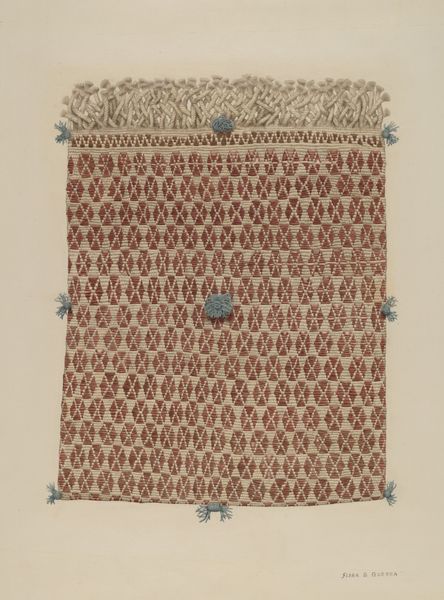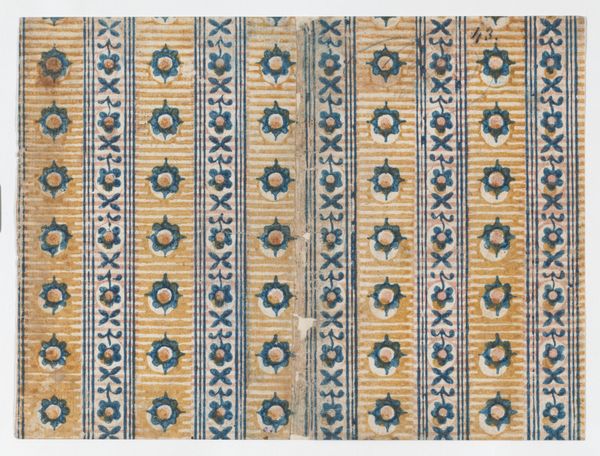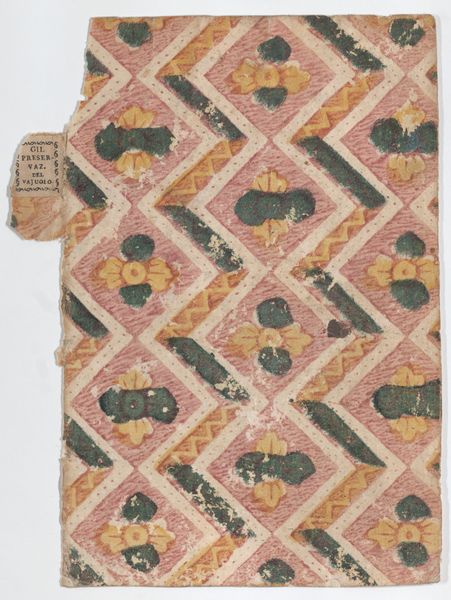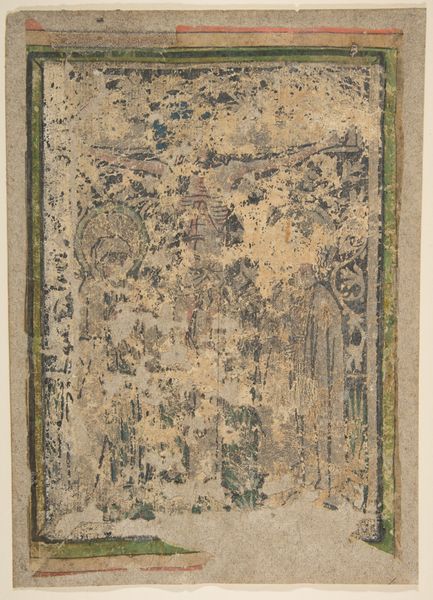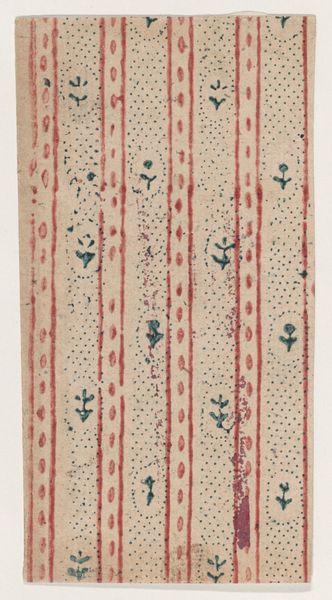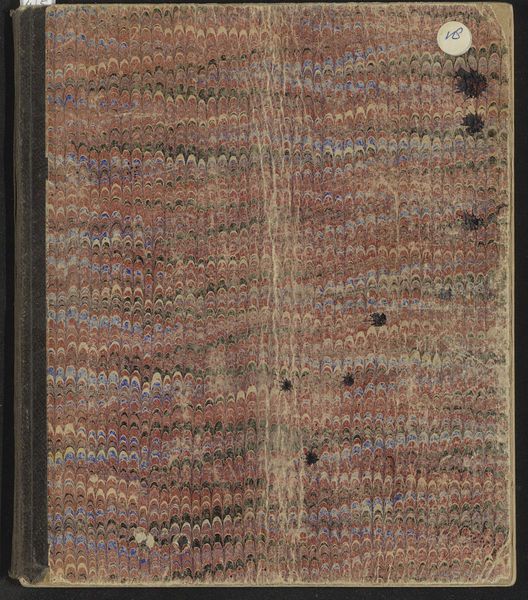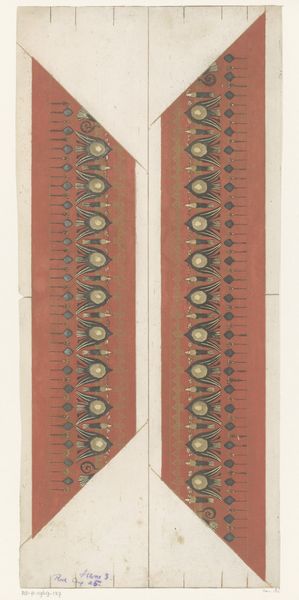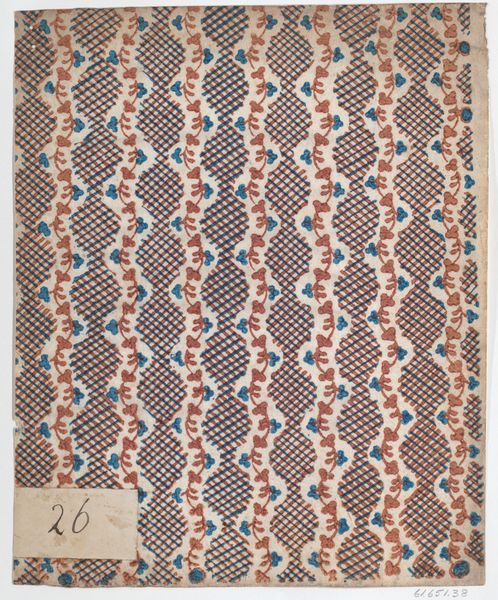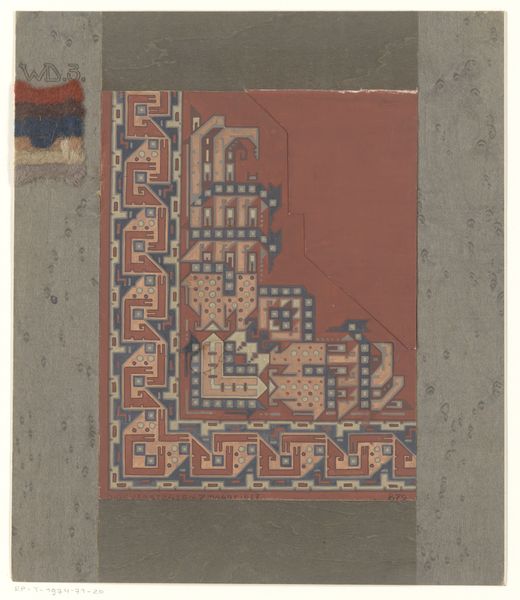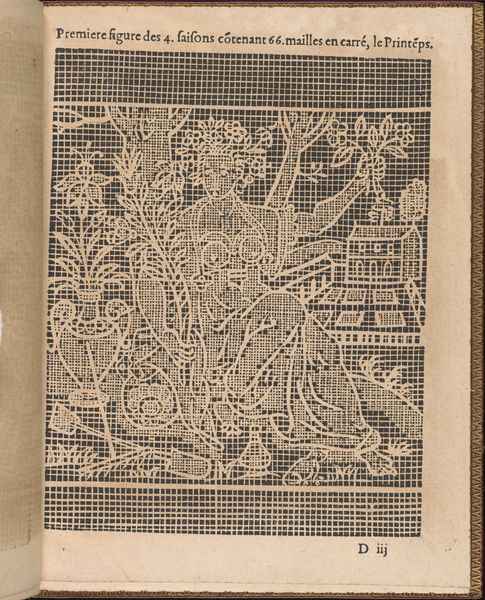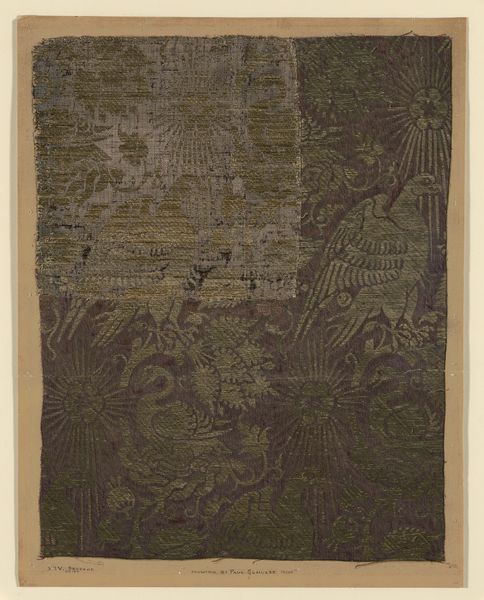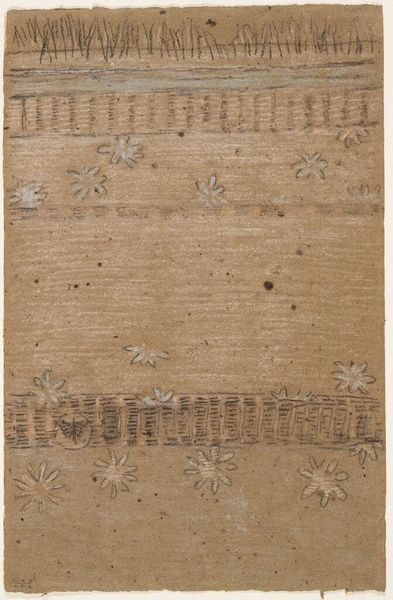
drawing, print, textile, paper
#
drawing
#
water colours
# print
#
textile
#
paper
#
geometric
#
abstraction
#
decorative-art
Dimensions: Sheet: 8 7/16 × 5 1/2 in. (21.4 × 14 cm)
Copyright: Public Domain
Curator: Before us is a work cataloged as "Sheet with striped and abstract pattern," dating from somewhere within the 19th century. The piece, currently residing here at the Metropolitan Museum of Art, is an anonymous work, primarily composed on paper, using a mix of textile and print techniques. Editor: Well, it's immediately striking, isn't it? That stark, rhythmic repetition. The blue stripes are so assertive, and the smattering of floral or botanical elements lends it a kind of organized whimsy. The textile feel definitely shines through! Curator: Indeed. We see this sort of pattern emerging during that period accompanying an upswing in textile production alongside an increase in public demand. It wasn't only about function anymore; patterned textiles helped elevate everyday life. They communicated taste and, frankly, social aspirations. Editor: Right, it is very decorative-art, with the geometric pattern acting as the groundwork for an abstraction that I am interpreting as flowers, so there is visual harmony between these abstract images. But, these stripes—they are so unwavering! Curator: They impose a kind of order, reflecting, perhaps, the era’s attempts to systematize industry and even social strata. The regularity mirrored in other societal structures of the 19th Century, you see? Even fashion reflected this desire to convey some sense of propriety or control. Editor: Yet those watercolor details—especially in those suggestive floral clusters, they're fighting against it! Each a unique bloom pushing against this rigid matrix. So what kind of space do you think this pattern would have lived in? Curator: Oh, myriad possibilities! Window hangings, chair coverings, perhaps even used for less opulent clothing items. What matters, in the larger context, is it highlights design democratizing. It brought artistry and beauty into broader reaches of the population, beyond just wealthy patronage. Editor: That texture… it’s palpable even through the glass. The color story tells tales as well with its warm and cool contrasting color palettes creating some tension within the piece as well! It makes you wonder about the creator's intention. What mood were they trying to capture? Curator: What’s wonderful, isn't it, is this artifact provides glimpses. Fragments hinting at lives lived, priorities valued, and how aesthetics were integrated into the very fabric—pardon the pun—of their daily routines. Editor: It is amazing how one simple piece like this can create the connection of both sight and mind in viewing experiences.
Comments
No comments
Be the first to comment and join the conversation on the ultimate creative platform.
